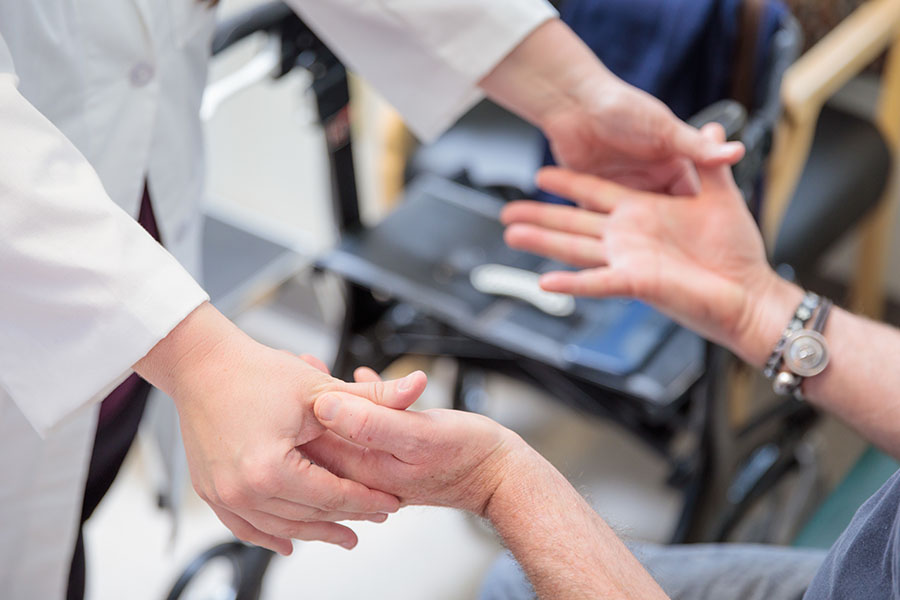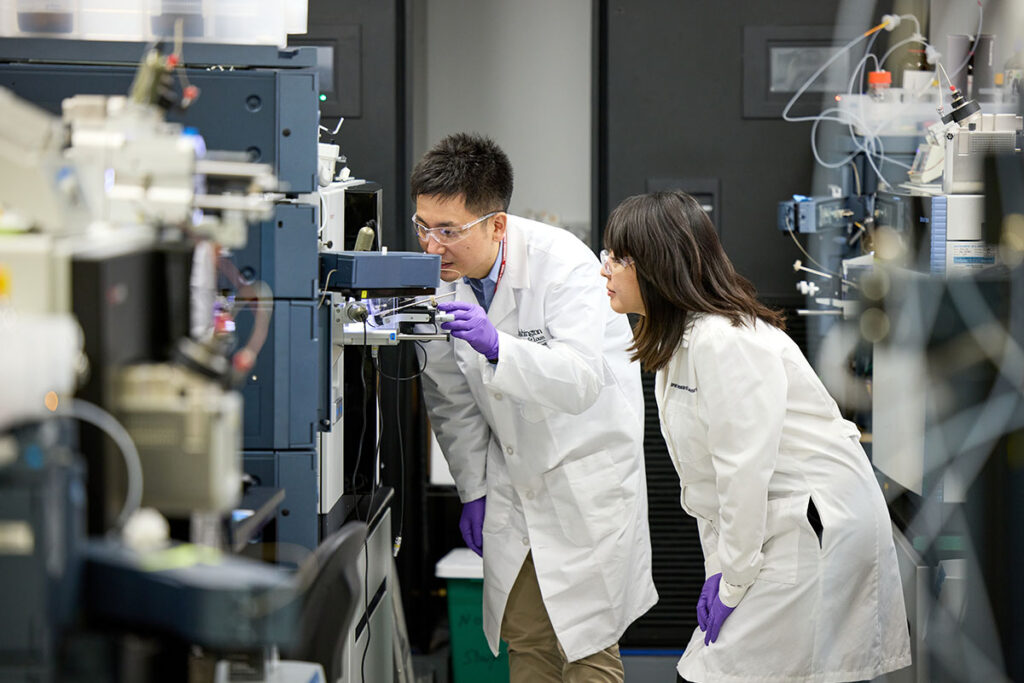Our department strives to provide outstanding clinical care, to train leading neurologists and scientists of the future, and to continue to serve as an international leader in clinical and basic research of disorders of the nervous system.
Building upon a long-standing tradition of excellence in these areas, our goal is to bring scientific research and discovery from the bench to the bedside to improve the lives of our patients.

Each of the our clinical services is staffed by faculty and clinical physicians, and in partnership with our affiliated hospitals and medical facilities, we serve patients of all ages. Our clinical neurology faculty serve as the medical staff for Barnes-Jewish Hospital, the main adult teaching hospital, and St. Louis Children’s Hospital, the main pediatric hospital, and our resident and physician trainees receive training and provide care at these institutions. In addition to learning in the clinical settings of our outpatient facilities and the hospital floors, students have access to the Washington University Farrell Learning and Teaching Center, a state-of-the-art facility that provides an ideal learning environment.
Our research efforts range from basic science investigations through translational research and clinical application. Our neurology research labs are located throughout the university in the Jeffrey T. Fort Neuroscience Research Building, East Building, Biotech Building, McMillan Building, the Rehabilitation Institute of St. Louis, Irene Walters Johnson Building, East McDonnell Science Building, McDonnell Sciences Building, as well as the Sleep Center offices located five miles west of Washington University Medical Campus. While there are numerous publicly and privately funded research centers within the department, the Hope Center for Neurological Disorders and the Knight Alzheimer Disease Research Center (ADRC) serve as the primary centers.

Cross-organizational collaboration
Consistent with the spirit of collaboration that pervades WashU Medicine, many neurology faculty belong to more than one section, and sections often include faculty primarily based in other departments. Similarly, many neurology faculty hold joint appointments in other clinical or basic science departments.
Members of the faculty are active in interdepartmental PhD or MD/PhD training programs, such as the Washington University neuroscience program. The department maintains, on average, approximately 10 graduate students working toward completion of PhD or MD/PhD degrees in laboratories directed by neurology faculty members.
Research efforts are also coordinated by two research centers: the Hope Center for Neurological Disorders and the Knight Alzheimer Disease Research Center (ADRC) and studies take place in a number of additional centers and labs. Institutional support for neuroscience research is additionally provided by two endowed research centers at WashU Medicine, the McDonnell Center for Higher Brain Function and the McDonnell Center for Cellular and Molecular Neurobiology. The department is an active participant in an annual neuroscience retreat sponsored by these two McDonnell Centers.
Learn more about our…
Contact us
Department head
Jin-Moo Lee, MD, PhD
Andrew B. and Gretchen P. Jones Professor
Head, Department of Neurology
Email: neurology@wustl.edu
Mailing address
Department of Neurology
Washington University School of Medicine
MSC 8111-29-9000
660 S. Euclid Ave.
St. Louis, MO 63110



